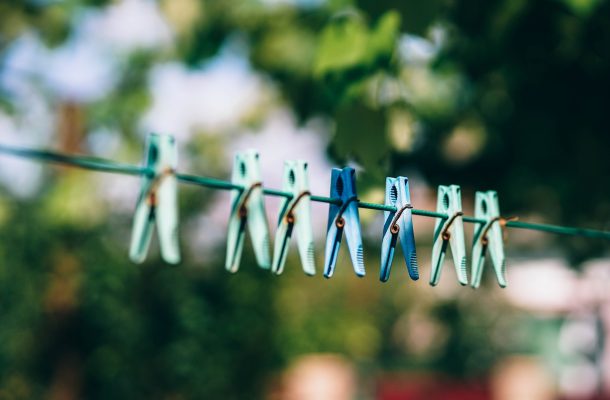Who is doing what on the homefront?

Australians are becoming more progressive in their views on gender roles, but there is still a long way to go before we achieve gender equality in the home.
This year’s analysis of the Household, Income and Labour Dynamics in Australia (HILDA) Survey of over 17,000 people has looked at how heterosexual couples have been dividing up their share of paid and unpaid work since 2002, and whether they think that division is fair.
It shows us that Australians are becoming less traditional in their attitudes towards parenting and work; more people are supporting maternal employment, greater father involvement in parenting, and the use of day care for young children.
But this progressive thinking isn’t leading to the equal division of work between men and women at home. Women still do seven hours more housework per week than men and, based on current trends, it will take another 30 years before both genders do the same amount of housework.
While changes in attitudes are translating into some changes regarding who does what in the household, the shifts are small.
In 2002, men aged 15 to 64 spent 12.4 hours per week on housework, and this has risen to 13.3 hours in 2016. They also spend more time caring for children and for elderly or disabled family members at 5.4 hours in 2016, up from 4.8 hours in 2002.
At the same time, women have reduced the time they spend on housework from 22.8 to 20.4 hours per week, but the amount of time they spend on care has increased from 9.7 hours per week to 11.3 hours per week.
And although young women are now more highly educated than men, and more women are employed, men still spend much more time on employment (35.9 hours per week) than women (24.9 hours per week).
The first child factor
So why are men still focusing on employment and women on housework and care?
The birth of the first child is key to understanding this.
Before the arrival of a child, couples share the work relatively equally. Men spend only slightly more time on employment than women (53 per cent of the total couple employment time), and women spend only slightly more time on housework (54 per cent of the total housework time).
But a first child establishes a more traditional arrangement.
Many women then focus on full-time caring while men maintain employment and help out when they’re at home. In the year after the birth of a child, women’s employment share drops to an average of 14 per cent of total couple employment time, but they do 72 per cent of care and 64 per cent of the housework.
Not open to negotiation
These new, more traditional, roles are not renegotiated as children grow older.
Ten years after the birth of the first child, women’s share of the couple’s employment time is only back to 30 per cent, while still doing 63 per cent of the housework and 66 per cent of care. Even ten years after the second birth, things have not nearly returned to where they were prior to the birth of the first child.
Women’s satisfaction with the division of housework and child care drops markedly after the birth of the first child and continues to decline until the child is five years old. Not surprisingly, men are much more satisfied with this arrangement.
This entrenchment of a traditional division of labour despite more progressive attitudes is partly due to economics.
The gender pay-gap, the cost of external child care, and family benefits for single earner families contribute to the female partner staying home or working part-time while the children are small.
Once these new roles are established, it may be difficult for those women who want to get back to work or increase their working hours to demand more engagement at home from their partners.
Even if both parents work full-time, housework and care remain the domain of mothers, who then do 58 per cent of the housework and 59 per cent of the care.
What is fair?
Getting the balance right at home is also difficult because men and women have different perceptions of a fair division of unpaid work. Only a quarter of couples agree that they are dividing the housework fairly, and the proportion of couples who think they share child care tasks fairly is even lower at 22 per cent.
Although most partnered men think they do their fair share in the home, most partnered women think they do more than their fair share.
Generally, couples consider an arrangement as fair where both partners spend about the same overall time on any type of work – employment, housework or care. How this total time is divided in terms of paid work or unpaid work seems to matter less.
But this has long-term economic implications. While women focus on work in the home, they receive no or lower earnings than men, they miss career opportunities and accumulate less superannuation.
Tackling the economic risks
This may not matter too much for couples who share their income equally.
However, with one in three marriages predicted to end in divorce, there is an economic risk attached to a traditional division of labour, reflected in high poverty rates among single mothers and single elderly women.
From a policy perspective, there are good reasons to shift couples away from traditional gender divisions of paid and unpaid work.
This requires policies to improve mothers’ employment participation and policies to increase men’s contribution to unpaid work. These might include further reducing the cost of child care and increasing the availability and length of paid paternity leave.
Scandinavian countries provide examples of what these kinds of leave regulations may look like. Iceland, for example, reserves three months of parental leave for the father and three months for the mother, and a further three months the partners can divide up as they wish.
The benefit covers 80 per cent of earnings and, as a result, is attractive to many men who earn more than their partners.
Policies like these would support a more even division of labour for couples and help reduce the severe disadvantage faced by women following relationship breakdown.
But for the time being, the data suggest that couples may benefit from being upfront on who’s doing what and why around the home and asking whether the current highly gendered division of roles can be renegotiated to better suit both.
This article was published by Pursuit.
Dr Inga Lass is an academic at the Melbourne Institute of Applied Economic and Social Research. Her research interests include the sociology of work; family sociology, life course research as well as labour market and family policy.












